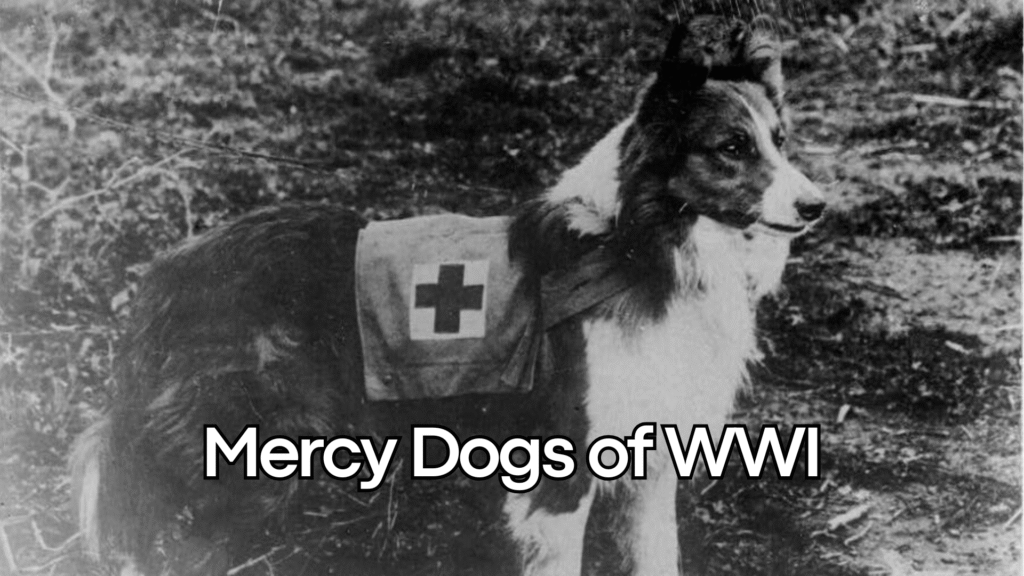In the chaos of World War I, amidst the trenches and the relentless artillery fire, emerged unexpected heroes, Mercy Dogs. These four-legged saviors risked their lives to bring hope and aid to wounded soldiers, embodying courage and loyalty in the face of unimaginable danger.
The Birth of the Mercy Dog Program:
The concept of using dogs for battlefield rescue began in Germany in the late 19th century, thanks to Jean Vanguard, a German painter and animal advocate. By the time World War I erupted, thousands of trained dogs were ready to serve, with similar programs in France, Italy, and Austria. Britain joined the effort in 1917, forming a war dog school under Major Edwin Huntingville Richardson.
Bravery on the Battlefield:
Mercy Dogs were trained to navigate dangerous battlefields, carrying supplies and providing comfort to the wounded. They ignored the dead, focusing only on those who could be saved. Their tasks included staying with injured soldiers until help arrived or returning to their handlers with a piece of the soldier’s clothing to signal medics.
Individual Stories of Valor:
Sergeant Stubby: A Boston Terrier type stray who served with the US 102nd Infantry Regiment, Stubby warned troops of mustard gas attacks, located wounded soldiers, and even captured a German soldier. He participated in 17 battles, earning two Purple Hearts. Rags: A mixed breed terrier found in Paris, Rags became a messenger dog for the U.S. 1st Infantry Division, carrying critical messages through heavy shellfire. Caesar: Serving with the New Zealand Rifle Brigade, Caesar, a bulldog, was trained to locate wounded soldiers and led medics to them, wearing a gas mask when needed.
Legacy and Impact:
The Mercy Dogs’ service saved countless lives and inspired future military working dog units and civilian search and rescue programs. Their legacy lives on in today’s therapy and service dogs, who continue to embody the same qualities of loyalty, intelligence, and an unshakable bond with humans.
The Mercy Dogs of World War I were more than battlefield tools; they were comrades who brought hope to the hopeless and eased the fear of the dying. Their bravery, devotion, and service deserve to be remembered alongside the human heroes of the Great War.
Subscribe Now: Stay updated with more stories of bravery and loyalty by subscribing to our podcast.










